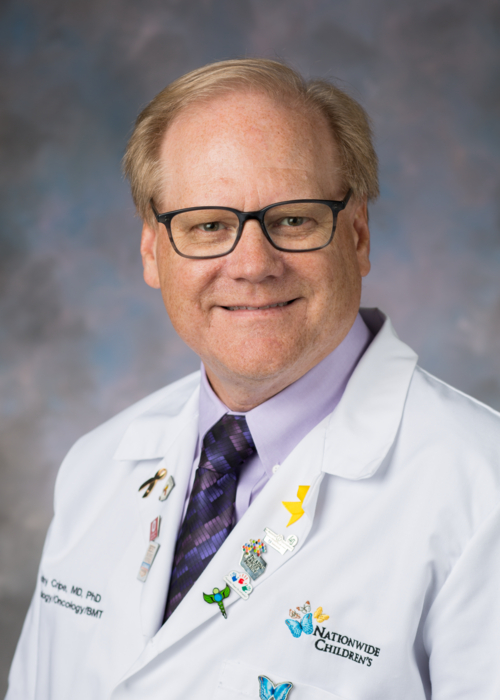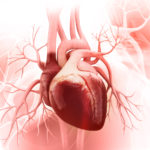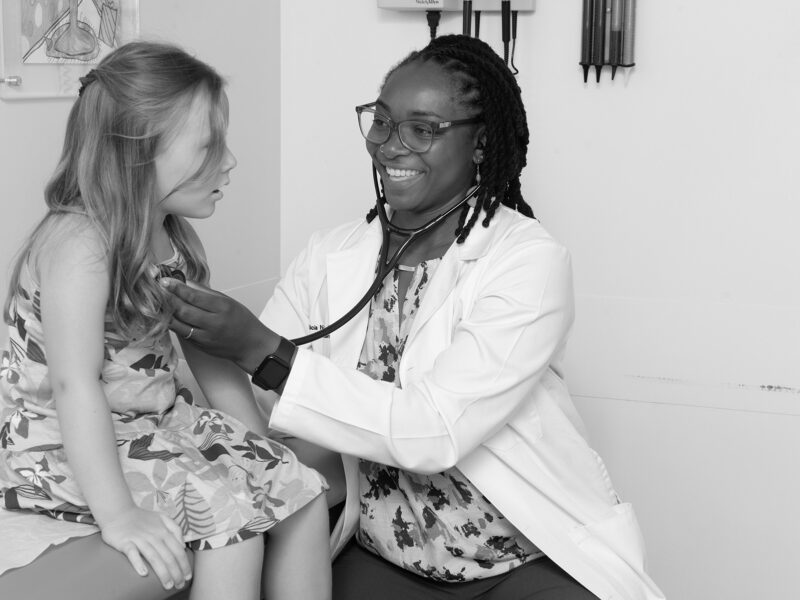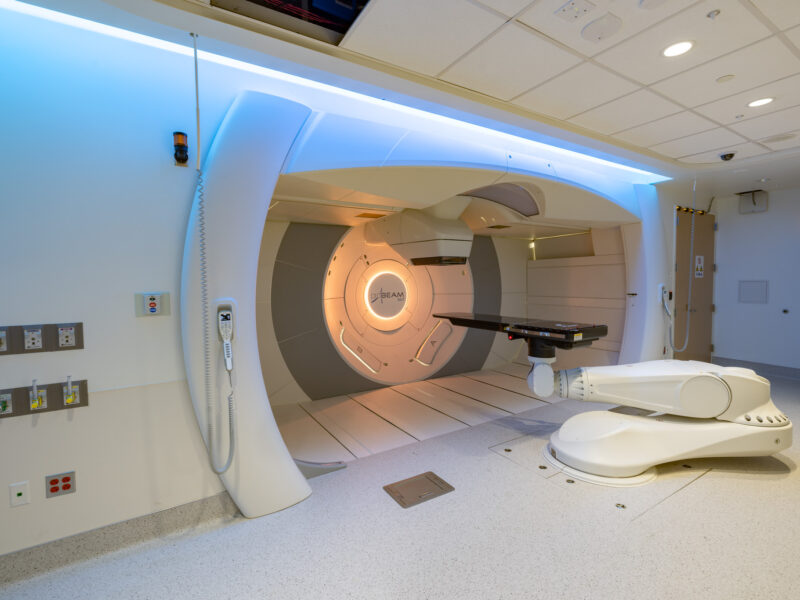Going Viral: The AAV Approach to Curing Cancer
Going Viral: The AAV Approach to Curing Cancer https://pediatricsnationwide.org/wp-content/uploads/2023/04/W789544-Pediatrics-Nationwide-SpringSummer-2023_AAV-1024x256.jpg 1024 256 Emily Siebenmorgen Emily Siebenmorgen https://pediatricsnationwide.org/wp-content/uploads/2023/05/Emily.Siebenmorgen-scaled-e1684876333147.jpg- April 19, 2023
- Emily Siebenmorgen

According to Timothy Cripe, MD, PhD, chief of the Division of Hematology and Oncology at Nationwide Children’s Hospital, it’s an incredible time to be working on cancer treatment – and now, targeted cancer prevention.
“There’s so much going on in the cancer world these days,” says Dr. Cripe, who is also a principal investigator in the Center for Childhood Cancer Research at the Abigail Wexner Research Institute at Nationwide Children’s. “It’s a horrible disease, but it’s really an exciting time to be doing research with new knowledge, collaborations and an explosion of technology.”
Dr. Cripe’s team had their own breakthrough last summer when they reported proof-of-principle results for adeno-associated virus (AAV) gene therapy, a novel therapeutic approach that could improve the efficacy of cancer treatments.
Using mice that were injected with human immune cells, they created recombinant AAV vectors that expressed a therapeutic protein that attacked malignant B cells in the bloodstream. The key, Dr. Cripe says, is that this treatment only requires a single intravenous injection to administer.
“We’re so excited about this AAV development because it’s a single shot that gives you long-term, therapeutic effects,” says Dr. Cripe, whose discovery has been licensed by Nationwide Children’s to a startup biotech company. “I think that’s the magic. Most drugs are episodic – you take a dose, or have an IV, or do a cycle of chemotherapy – and then you need to wait and recover. Even if you take a pill every day, the levels of the drug go up and down in your bloodstream until you take your next pill.”
Cripe emphasizes that these “low” periods of medication are what give cancer cells opportunities to thrive.
“During those troughs of treatment, that’s when the cancer can figure out how to escape the medicine,” Dr. Cripe explains. “That’s one of the charms of AAV technology: you get steady levels of medicine for long periods of time. It puts pressure on the tumor in a way that really hasn’t been seen before.”
The question is: will this technology work in patients?
Scaling Results to Trials in Humans
In their proof-of-principle results, Dr. Cripe’s team designed a recombinant AAV vector they termed CD19 TransJoin, which showed reduction of CD19 flank lymphoma volume in mouse models. CD19 is a biomarker for B lymphocyte development – and since it’s present on all B cells, it makes a great target for immunotherapies for conditions such as acute lymphoblastic leukemia (ALL),

Most drugs are episodic … Even if you take a pill every day, the levels of the drug up and down in your bloodstream … That’s one of the charms of AAV technology: you get steady levels of medicine for long periods of time.”
-Timothy Cripe, MD, PhD, chief of the Division of Hematology and Oncology at Nationwide Children’s Hospital
“We are working hard to complete all of the tasks needed to be able to launch a clinical trial for patients with relapses or refractory ALL. We need to make a clinical-grade version and develop a number of tests we will need for the trial,” says Dr. Cripe, who is also a member of the Translational Therapeutics Program at The Ohio State University Comprehensive Cancer Center – James.
Following their results published in Science Advances, Dr. Cripe explains that they plan to bring a different version of this therapy into the clinic.
“We made a few changes to make the construct safer and more effective, which took some time.”
Beyond safety and efficacy modifications, creating new versions of recombinant AAV therapies is no small feat.
“AAV vectors are complicated to make,” Dr. Cripe says. “There are two major steps: making large productions of three different plasmids that contain instructions for making a virus, and then putting them together in cells to actually assemble into a virus. Both steps require expensive, large-scale manufacturing.”
Dr. Cripe’s team is currently preparing materials to launch a clinical trial.
Developing Targeting Therapies for a Myriad of Blood-Borne Cancers and Solid Tumors
Dr. Cripe’s team is also exploring applying their therapies to targeting primary tumor masses, such as neuroblastoma and various sarcomas. Thanks to their tricky defense mechanisms, most tumors require complex immunotherapy regimens beyond the scope of AAV gene therapy alone.
“Solid tumors create problems by creating their own environments,” Dr. Cripe says. “Sometimes we think of a tumor’s environment as a city, with a lot of different components or buildings. Their tumor co-ops other ‘normal’ cells, recruits them, and turns them into ‘bad actors’. It’s through commandeering these cells that tumors set themselves up to grow and resist therapy.”
So, if solid tumors are like a black hole, sucking in helpful immune cells from the bloodstream for rogue purposes, what if recombinant AAV therapies could target the “bad actors” helping the tumor grow?
“When co-opted by the tumor, macrophages start expressing molecules that suppress T cells and immune responses, helping the tumor grow,” Dr. Cripe says. “We are also testing ways we might counteract those effects and enable our therapy to work even better.”
Moreover, the sustained, circulating nature of this therapy also makes it ideal for targeting cancers that are found in the bloodstream.
“Beyond leukemias, we are also testing the utility of our therapy for adult blood borne cancers such as multiple myeloma, which we picked because others have identified target proteins we could use for our therapy,” Dr. Cripe explains. “The only way we’ve been able to get this far is by building off of work done by my colleagues using AAV for neuromuscular disorders, and other scientists developing related immune therapies for cancer. My research team and I are standing on the shoulders of those giants.”
This feature was published in the Spring/Summer 2023 issue. Download the full issue.
Reference:
Cripe TP, Hutzen B, Currier MA, Chen CY, Glaspell AM, Sullivan GC, Hurley JM, Deighen MR, Venkataramany AS, Mo X, Stanek JR, Miller AR, Wijeratne S, Magrini VJ, Mardis ER, Mendell JR, Chandler DS, Wang PY. Leveraging gene therapy to achieve long-term continuous or controllable expression of biotherapeutics. Science Advances. 2022 Jul 15;8(28):eabm1890.
Image credit: Nationwide Children’s
About the author
Emily Siebenmorgen is a Science Communication Specialist at Nationwide Children's Hospital with a passion for making research findings accessible. From her time writing at Battelle and AWRI's Center for Injury Research and Policy, she has experience distilling complex topics into simple takeaways for both professional and consumer audiences. Emily earned her BS in Psychology and BA in Strategic Communication from The Ohio State University.
-
Emily Siebenmorgenhttps://pediatricsnationwide.org/author/emily-siebenmorgen/
-
Emily Siebenmorgenhttps://pediatricsnationwide.org/author/emily-siebenmorgen/
-
Emily Siebenmorgenhttps://pediatricsnationwide.org/author/emily-siebenmorgen/September 29, 2022
-
Emily Siebenmorgenhttps://pediatricsnationwide.org/author/emily-siebenmorgen/October 17, 2022










